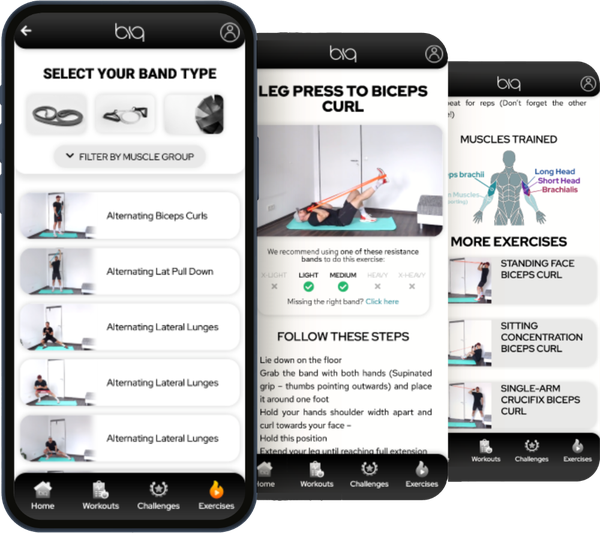The greatest chest isolation exercise out there – the mighty chest fly (knows as the chest crossover as well). Resistance bands bring this exercise out of the gyms into the world. Usually you need a cable machine to do flys effectively. Bands change that. Now you can train your chest anywhere and make progress.
We will jump straight into it and show you in the following section how to properly execute the chest fly with resistance bands. Right after you will learn what mistakes to avoid and how to adjust the resistance to make progress. In the second part of the article we will have a look at chest fly variations and background information when it comes to training the chest with resistance bands. At the very end you will find how you can incorporate chest flys into a workout.
How To Do Chest Flys With Resistance Bands?
The warm-up is the first step to any exercise. Don’t skip it. Your muscles will be prepared for the workout, and you will have less chance of injury. This will result in faster and bigger progress in the long run.
For an effective chest fly you will be needing a door anchor to fix the band in place. We also highly recommend wearing gloves to protect your hands form the friction. If you don’t have this equipment yet, check out these: Door Anchor and Workout Gloves.
The main purpose of the chest fly movement is to bring your arm towards the middle and even further across of your body, and you will do that by attaching the resistance band to a door with a door anchor or to a bar, rack or anything else. (Make sure to follow Our guide for door anchors to be safe!)
Follow these 6 steps to nail the chest fly:
- Attach the band to a door with a door anchor (height: around chest level)
- Grab the band with one hand and step away from the anchor point until you feel resistance
- Align your shoulders with the band path
- Bring your arm inwards and focus on keeping your upper body straight
- Return slowly to the starting position (resist against the pull of the band)
- Repeat for reps (Don’t forget the other side!)
You can even slightly turn your back to the anchor point to get an even greater stretch in your chest and a greater range of motion with resistance. You will also feel your abs working quite hard to keep you stable and upright – that’s a great way to incorporate core work into any workout.
Doesn’t sound too complicated, right? But there are many tweaks to this exercise that we have listed below – make sure to check them out 🙂
Nail The Exercise Form!
⓵ Chest Out, Shoulder Blades Together! – this is the most common mistake with this exercise and might get you into using more of your shoulder muscles and triceps during this exercise instead of your chest.
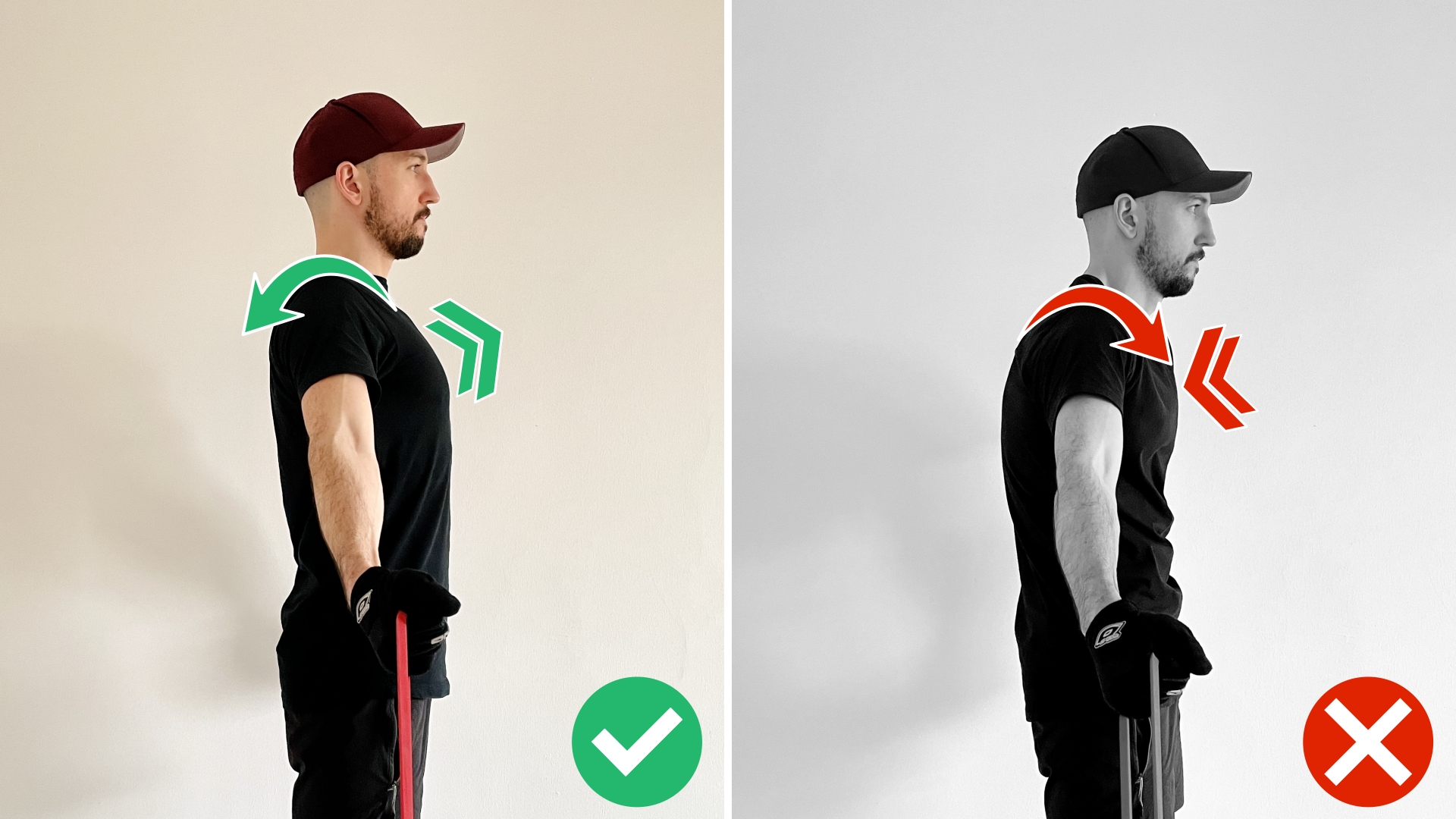
Rotate your shoulder backwards and fix them in this position. At the same time stick out your chest. This will bring you into a stable position where you will be using your chest to work against the resistance and don’t risk shoulder injuries.
⓶ No Slack! – I also often see this mistake when people start using resistance bands. You will only make progress if you have resistance throughout the movement. This means having the band hanging through in the start position is a no-go! Take as many steps as needed away from the anchor point until you have tension in the band and feel it pulling on your arm. Of course you can also wrap the band around your hand and keep the distance the same.
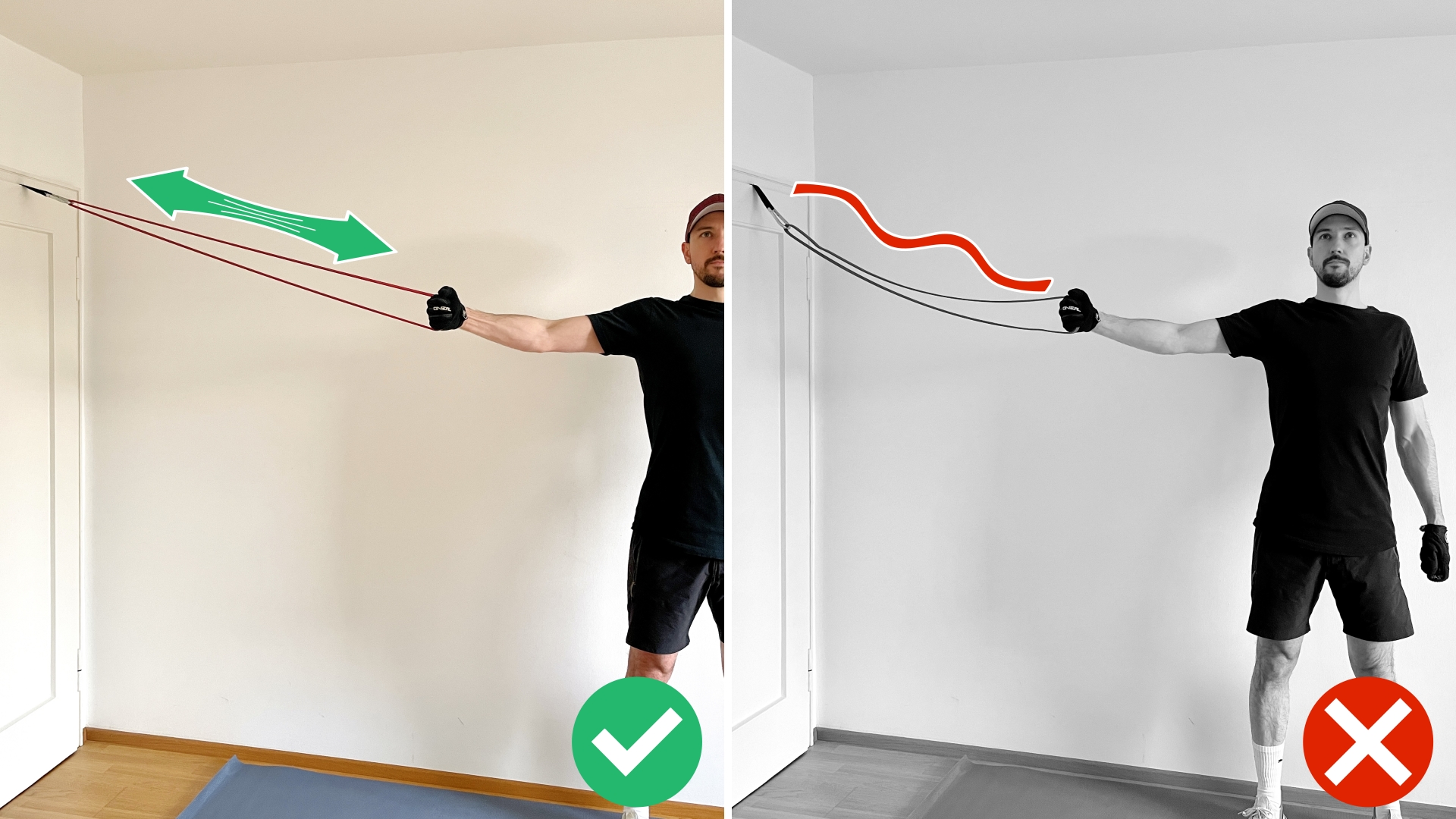
⓷ Crossover! – Often people doing this exercise stop too early and don’t use the full range of motion of the chest fly. You should pass the midline of your body. This way you will achieve full chest contraction and don’t leave results on the table.
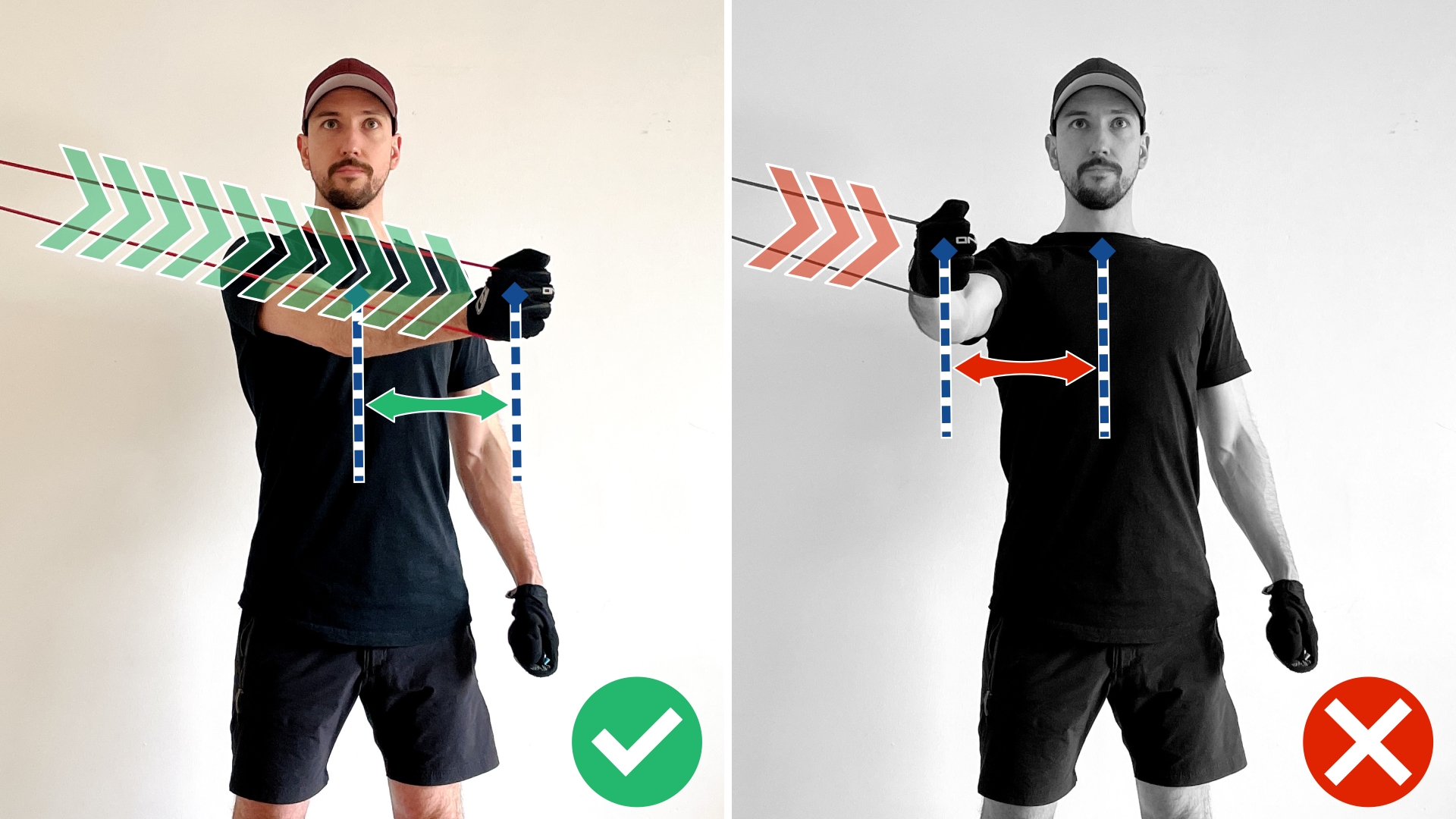
⓸ Brace Your Core! – Since you will only use one side at a time you will have to stabilize yourself to keep standing in one spot and not rotating your upper body. This will require that you use your core muscles to work against the pull of the band.
⓹ Control each repetition! – Really make sure to control your reps. Especially the negative part of the chest fly (where your return to the starting position). It is often the case that people relax too much and simply let the band pull their arm. You need to actively work against the band even in the negative part to get the best results.
More Mistakes To Avoid: To get your resistance band training skills to the next level there are also some general mistakes to avoid. We collected all of them in one spot for you: The Worst Mistakes You Can Do When Training With Resistance Bands.
How To Adjust The Resistance
Since resistance bands don’t have a fixed resistance like weight do, it is important to know how you can adjust the resistance level of a given band. People often jump straight to the next heavier band once an exercise gets easier and this is often a mistake. Doing that can result in bad exercise form and can lead to injury in the worst case. We want to prevent that!
We collected several methods how you can adjust the resistance of a given band – specifically applicable to the chest fly. Check them out:
Adjust the length of the band – the most basic method is to shorten the band. The shorter the band the more resistance you will have to work against in a given exercise. The best way for chest flys is to simply wrap the band around your hand. Gloves are a good idea, trust me 😉
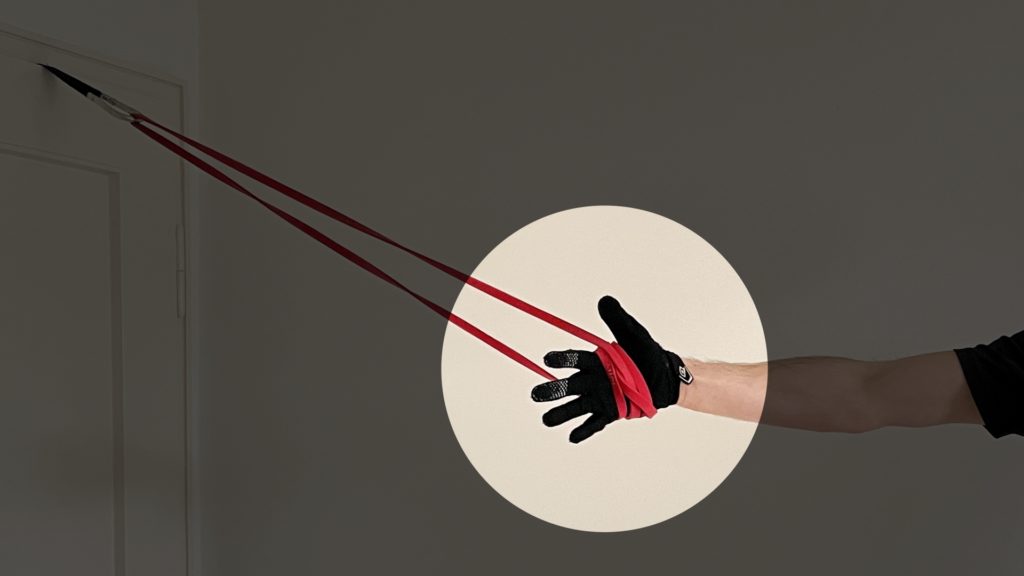
Change the Distance to Anchor point – whenever you use a door anchor you can adjust the distance to the anchor point by taking steps away or towards it. This will result in more or less stretch at the beginning of the chest fly and therefore in the end as well. The best thing about this method is that you can do it in the middle of a set. Want more resistance? Take a step away from the anchor point. Want less? Take a step towards it. Easy!
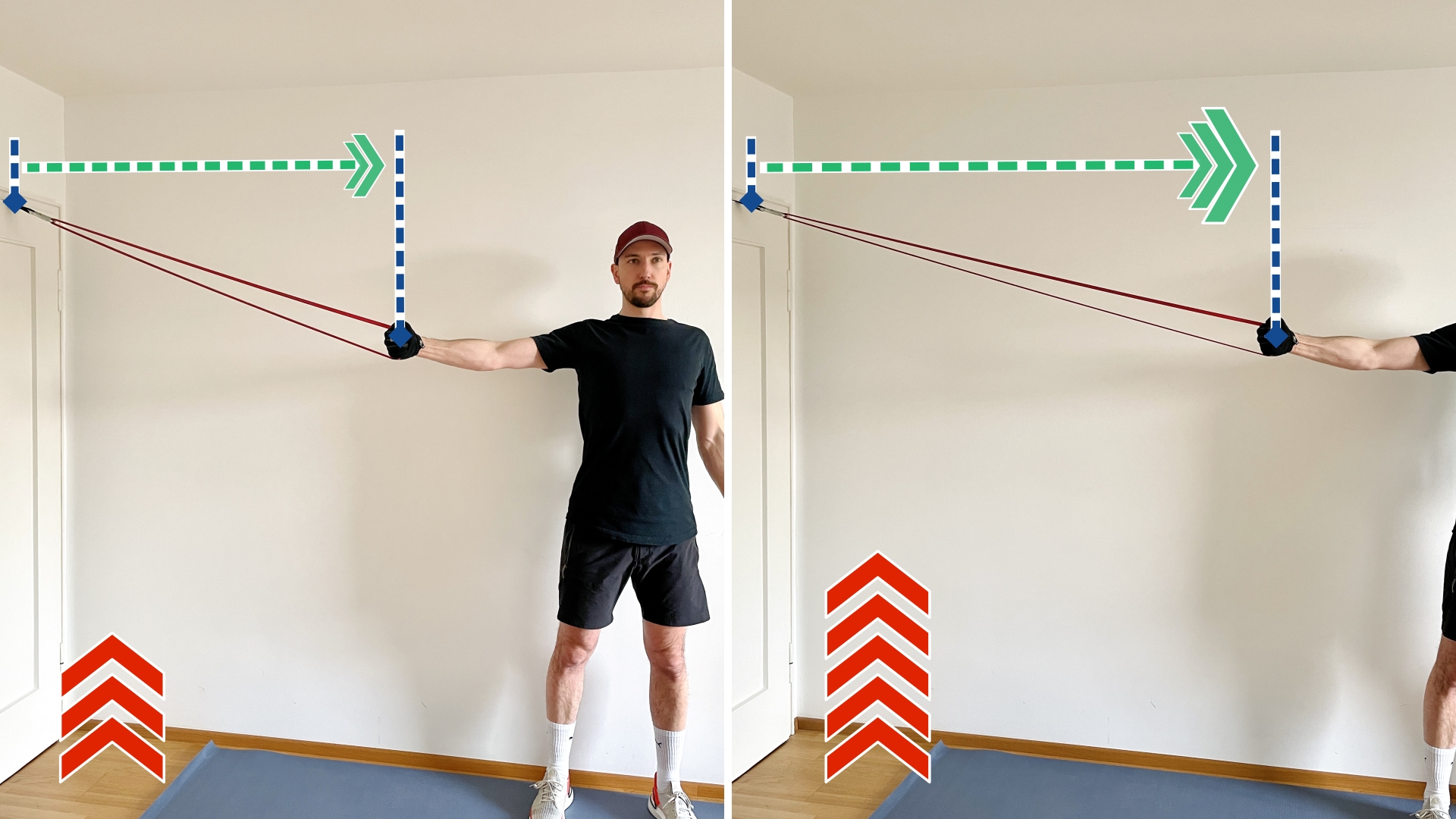
Combine Bands – if you have a set of bands with different resistance levels you can combine them to get the perfect resistance. For the chest fly I like to add the lightest band to my set and see how well I can handle it.
This is also the reason we recommend getting a set of bands with different resistance levels from the beginning. You can combine them, and you will also have the right resistance level for every muscle group in your body. Don’t have a set? Get this one: Resistance Bands Set
Slow it down – This method is gold and is often not used or at least not used enough. Simply by slowing down your reps you increase the intensity dramatically and your muscles will work way more. You can try counting to 3 in the positive and negative part of the chest fly and see how much harder the exercise will become.
The BIQ App
Take training with resistance bands to the next level with our free app.
- 800+ Exercises
- all band types
- different training goals & workouts
- challenges
- much more
Chest Fly Variations With Resistance Bands
Variations are great to change the targeted muscles slightly or to simply change it up to get more variety into your workouts and keep it interesting and fun.
An awesome thing about chest flys is that you can simply change the angle you’re doing this exercise with, and it will change the muscles you’re targeting.
Decline Chest Flys (High Anchor Point) – in this variation you will attach the band to an anchor point which is above your shoulders and fly to the level of your belly button. This will put more stress on your pecs especially your lower chest and will keep your shoulders almost out of play.

Incline Chest Flys (Low Anchor Point) – this is the reverse to the previous variation. You attach the band to an anchor point which is close to the floor and fly to shoulder level. This will focus more on your upper chest and will also involve quite some shoulder work.
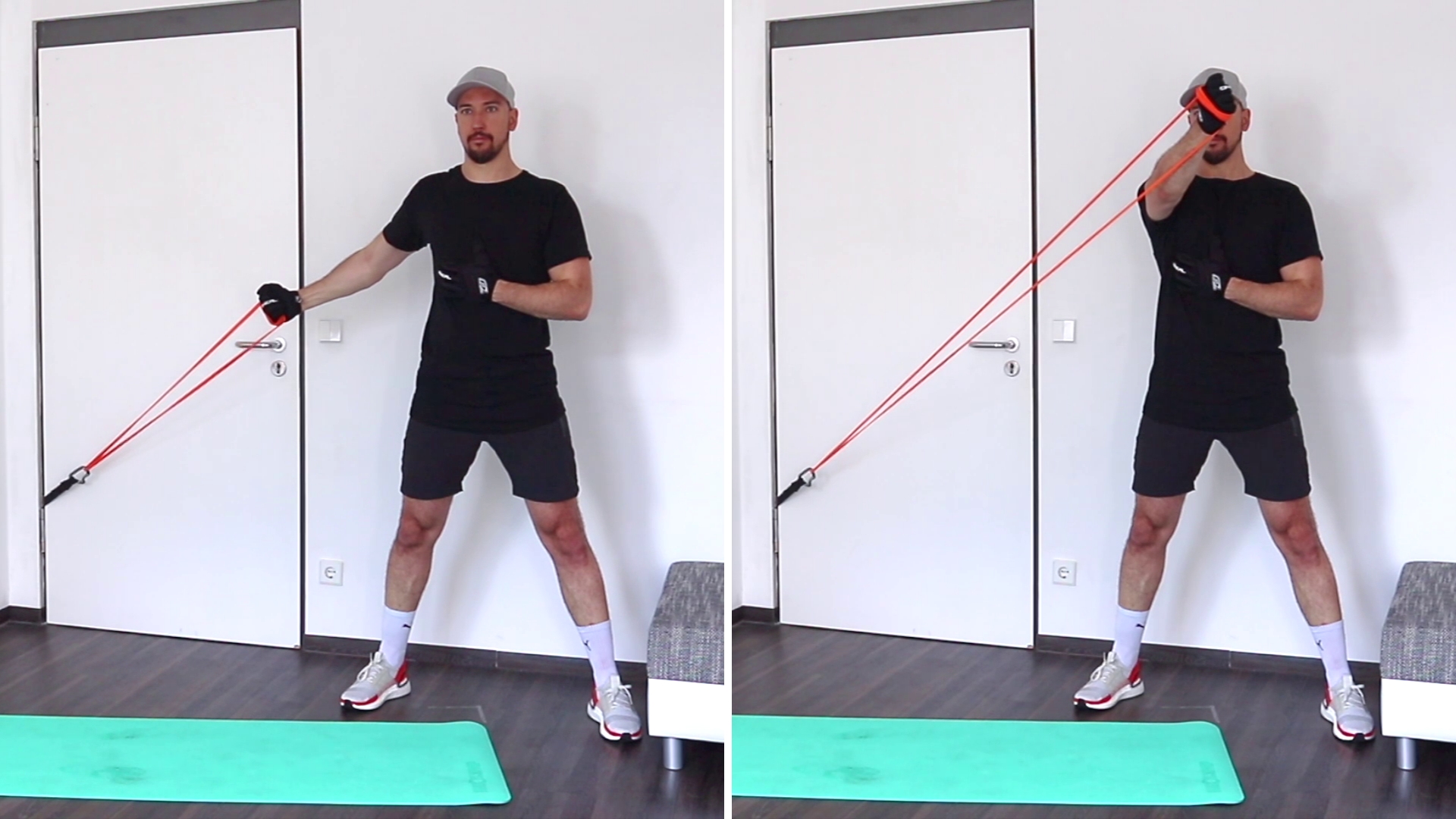
No Anchor Chest Fly – This variation is great if you simply don’t have anything you can attach the band to or want to do chest flys with both arms at the same time to safe time. The muscle activation will be less compared to the unilateral set up, but you will still feel your chest muscles working. It is crucial that you do the crossover in this set up to really maximize the contraction of the pec muscles.
A way I like to make this variation very challenging is really slowing down my reps. You can even add a pause when your hands are crossed over. This will really get your chest working.
Can You Train Your Chest Effectively With Resistance Bands?
Resistance band training gets more and more mainstream and lots of people already know and experienced how effective it is. But there are still people out there who will tell you that bands don’t come close to weights or machines and are only good for warming up and so on. Don’t listen to them. You can very well stimulate your muscles by using resistance bands and have great results. You can build muscle, increase strength and also burn fat by working against the resistance which bands generate.
So the answer is 100% YES.
Why Does Training With Resistance Bands Work
The answer is actually quite simple and straight forward. Our body and especially our muscles just can’t tell the difference between weight training and using bands. All our muscles know and respond to is resistance. For them, it doesn’t matter how this resistance is created. Be it gravity and weight or the elastic tension created when you stretch a resistance band. If you want to find out and learn more about this topic, have a look at this article: Why Does Training With Resistance Bands Work
Benefits Of Training With Resistance Bands
I personally enjoy doing chest flys much more with resistance bands than cable machines or free weights. I simply feel my chest working much more and see greater progress. But there are more benefits to resistance bands – some are:
- Functional Strength! Since resistance bands have a different strength curve than weights, and you often work standing up, where your core and lower body have to stabilize, you will build functional strength and increase your general fitness to a greater degree.
- No Cheating! Resistance bands prevent you from using momentum and cheat your reps. You will be forced to use proper form and therefore have a lower chance of injury.
- Easy to start! Especially for people new to fitness and training it might be very intimidating going to gyms. A lot of people have little knowledge of how to use the equipment correctly and therefore a greater risk of injury. With resistance bands you simply need to get a set of bands (quite cheap) and start playing around and ease into a workout.
- Anywhere – Anytime! You can fit resistance bands into any backpack or suitcase. Therefore, you have a whole gym always there with you, and you are always ready to work out. This is what I call the most important condition for making long term progress. Simplicity.
Check out all the benefits of resistance bands in this article: Benefits Of Resistance Band Training
What Muscles Are Used In A Resistance Band Chest Fly?
The chest fly is an isolation exercise for your chest muscles – also called pectoralis or pecs. The pecs are involved in pushing movements like the chest press – but you also use them when bringing your straight arm in front of you when having it extended to the side (basically the chest fly movement haha). Depending on what height you anchor the band you can put a focus on the upper or the lower chest portion.
Main Working Muscles:
- Pectoralis
Supporting Muscles:
- Shoulder Muscles (Deltoids)
- Core
Workout Plan
You learned in this article that chest flys are great to isolate the chest muscles. But only doing this exercise won’t build a great chest or give you a great general fitness. Chest flys are only great if they are part of a workout program. And workout programs are best if they are designed for a purpose or a training goal. This goal can be building muscle, loose body fat, build strength or just be more active and increase fitness.
Whatever the goal might be construction such a workout program can be a hustle. We know that not everybody has a passion for workout science – but everyone enjoys being active and use their body. That is why we created several workout programs specifically for resistance band training and put all of them and much more into a workout app.
If you want to find out more – check it out right here: BIQ Training App

